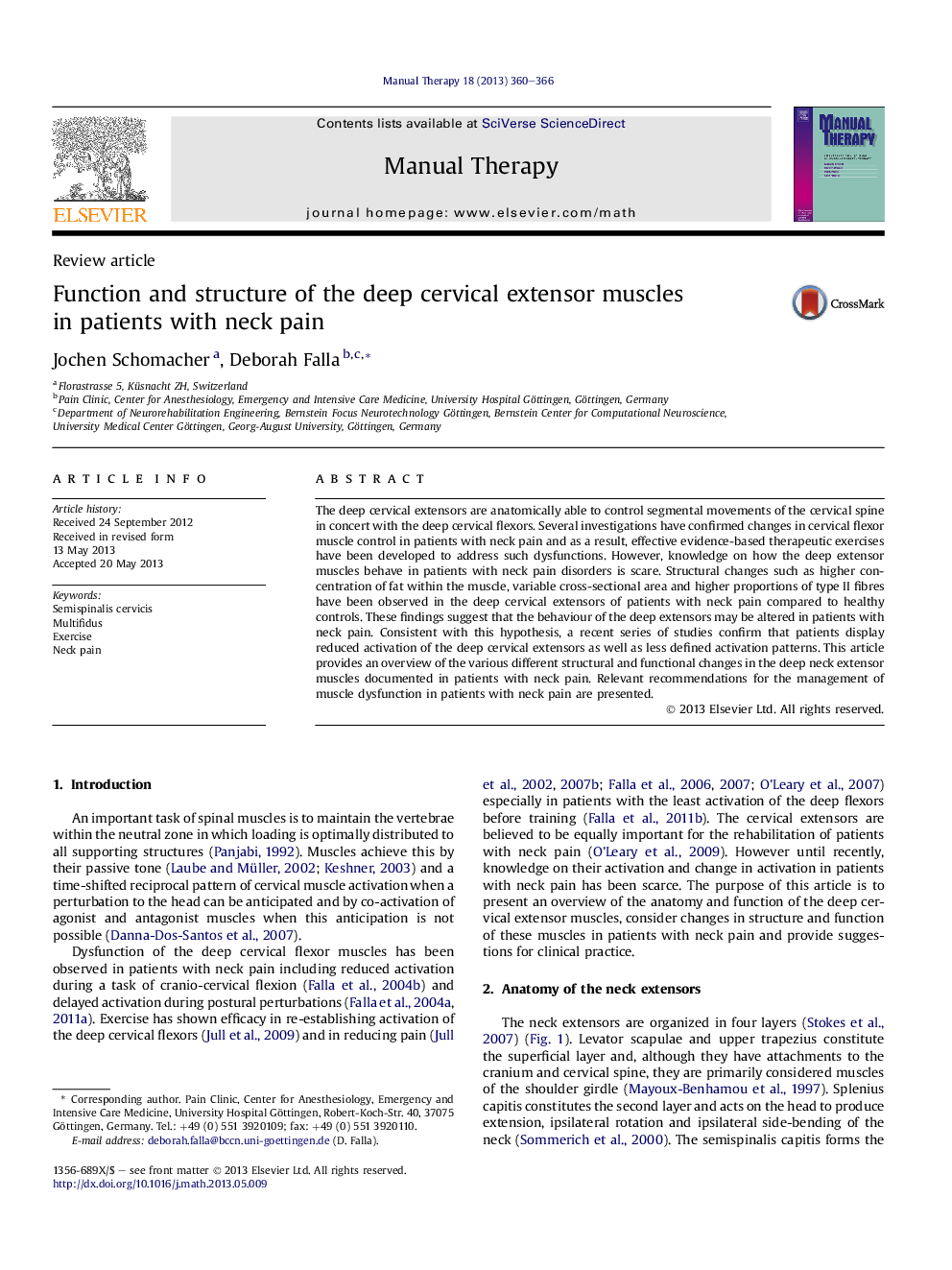| Article ID | Journal | Published Year | Pages | File Type |
|---|---|---|---|---|
| 2625041 | Manual Therapy | 2013 | 7 Pages |
The deep cervical extensors are anatomically able to control segmental movements of the cervical spine in concert with the deep cervical flexors. Several investigations have confirmed changes in cervical flexor muscle control in patients with neck pain and as a result, effective evidence-based therapeutic exercises have been developed to address such dysfunctions. However, knowledge on how the deep extensor muscles behave in patients with neck pain disorders is scare. Structural changes such as higher concentration of fat within the muscle, variable cross-sectional area and higher proportions of type II fibres have been observed in the deep cervical extensors of patients with neck pain compared to healthy controls. These findings suggest that the behaviour of the deep extensors may be altered in patients with neck pain. Consistent with this hypothesis, a recent series of studies confirm that patients display reduced activation of the deep cervical extensors as well as less defined activation patterns. This article provides an overview of the various different structural and functional changes in the deep neck extensor muscles documented in patients with neck pain. Relevant recommendations for the management of muscle dysfunction in patients with neck pain are presented.
